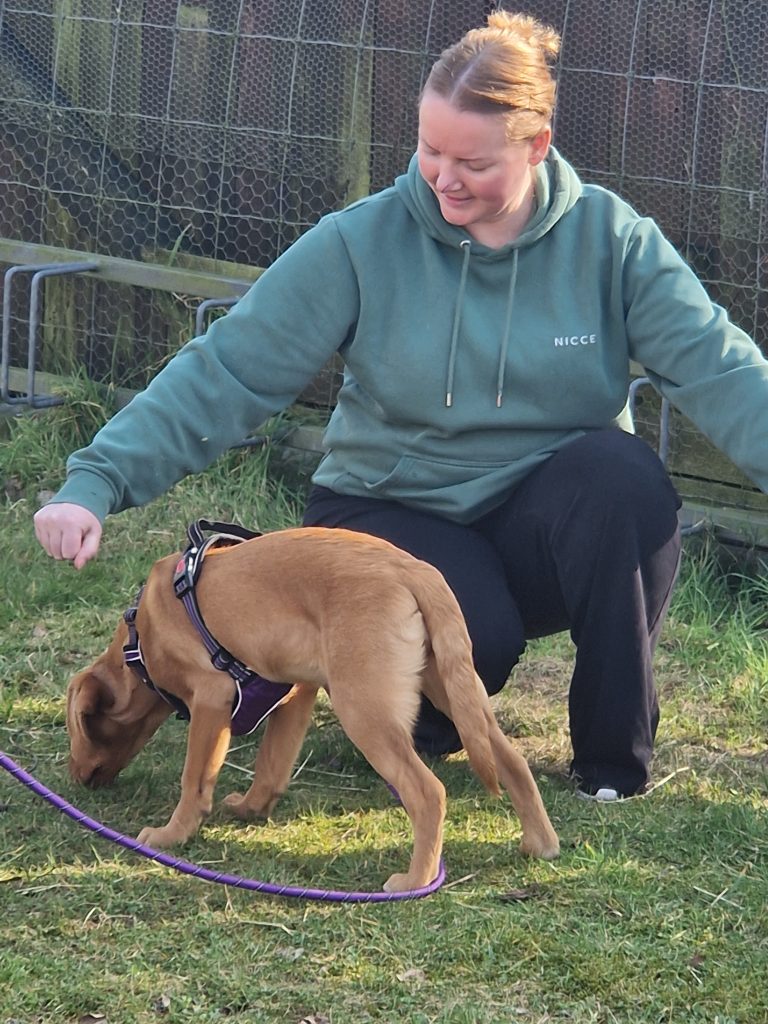
Reward-based training is a term you’ve likely come across if you’ve ever looked into dog training advice online or chatted with a modern trainer. But what does it actually involve? More importantly, is it really the right fit for every dog and owner?
Let’s take a closer look.
What is Reward-Based Training?
Reward-based training uses things your dog wants to reinforce behaviours you like. Many people also call it positive reinforcement training. For example, when your dog sits on cue, you reward them. If they come when called, you offer something they enjoy. These rewards increase the chances the behaviour will happen again.
This approach isn’t about bribery or trickery. Instead, it helps your dog learn what pays off. Dogs, like us, repeat behaviours that get results. Calm sitting might lead to a tasty bit of chicken, a tug game, or access to something fun—so it quickly becomes a preferred behaviour.
It’s All About the Calories
Every dog needs a specific number of calories each day to stay healthy and active. In reward-based training, you don’t add extra calories. Rather, you use part of your dog’s daily calorie allowance as rewards for training.
Rather than serving all their calories in a bowl, consider spreading them throughout the day to reinforce learning. A food reward used in training might come from their normal meals, or it could be something extra tasty like chicken, cheese, sausage, or a packaged dog treat. Choose whatever motivates your dog best.
You might hand-feed during a training session. Another option is to scatter kibble in the grass for a sniffing game. You could also offer a chew to reward calm behaviour. In all these cases, their calories help build valuable skills and support everyday behaviours you’d like to see more often.
Isn’t the Goal to Get My Dog to Work Without Treats?
Many people assume the goal is to stop using treats altogether. However, reward-based training aims to build strong habits so your dog doesn’t need a reward every single time.
We don’t get paid every time we act kindly—but we still do it because of earlier experiences and good outcomes. Dogs work in a similar way. Over time, they learn that behaving well leads to good things, even if there’s no treat every time. To maintain that behaviour, it helps to occasionally reward those great choices.
As your dog improves, begin rewarding only the best efforts. You can also switch to different types of rewards like praise or play. This gradual transition feels natural, not forced.
Do Rewards Always Mean Food?
Absolutely not. While food is practical and easy to use—especially for early learning—it’s not the only option available.
A reward is anything your dog finds valuable:
- A short game of tug or fetch
- Sniffing a favourite spot on a walk
- Getting access to their favourite resting place
- Going outside
- Enjoying a cuddle or belly rub (if your dog loves it)
By understanding what your dog enjoys, you can offer meaningful rewards that truly resonate.
What Are the Pros of Reward-Based Training?
✅ Builds Trust and Engagement – Your dog learns that you’re the source of good things. This helps strengthen your bond.
✅ Encourages Learning – Because dogs enjoy the process, they’re more willing to try new things.
✅ Reduces Fear – Since this method avoids punishment, it’s ideal for dogs that are shy or sensitive.
✅ Teaches Dogs to Think – Your dog becomes an active learner, offering behaviours and experimenting to see what works.
✅ Suitable for All Ages – From bouncy puppies to wise seniors, reward-based training works across the board.
✅ Backed by Science – Experts and welfare organisations widely recommend this method.
What Are the Cons?
❌ It Takes Planning – You need to prepare ahead, carry rewards, and think about how to set your dog up for success.
❌ Timing Matters – For rewards to work, they must come immediately after the desired behaviour. That takes practice to master.
❌ It’s Not a Quick Fix – Behaviour change takes time and repetition. If you expect instant results, you might feel disappointed.
❌ It Can Be Misused – If your dog only performs when they see a treat, you’ll need to adjust your training to build stronger habits.
Is Reward-Based Training Right for You?
If you want a dog who chooses to listen rather than one who obeys out of fear, reward-based training is a fantastic option. It’s a kind, effective, and ethical way to teach the skills dogs need to thrive in everyday life.
That said, this approach does require thought, consistency, and a willingness to engage with your dog’s needs and motivations. You won’t be barking orders—you’ll be building communication, trust, and understanding.
Some owners may prefer more traditional methods or find the planning difficult to maintain. And that’s okay. Still, for many people looking for a cooperative, connected relationship with their dog, reward-based training opens the door to real partnership.
Looking for guidance?
Whether you’re starting from scratch or feeling stuck, I offer supportive, reward-based training in-person near Montrose, Scotland, and online through fun, game-based courses. My approach is practical, flexible, and built around everyday life.
Got questions? Drop me a message—I’d love to help you and your dog find your rhythm.